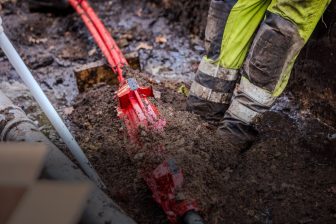EC welcomes EP vote on water quality standards
IP/08/958
Brussels/Strasbourg – The European Commission welcomes the European Parliament’s second reading vote 2008-06-17 approving the agreement reached with the Council on the proposed directive on environmental quality standards in the field of water. The directive will better protect rivers, lakes and coastal waters against pollution from a range of chemical substances.
European Environment Commissioner Commissioner Dimas said: "This directive has a particular importance as it completes the legislative framework for the protection of Europe’s water resources. I am grateful to the Parliament for the ambitious approach it has taken throughout the negotiations and I welcome that Parliament and Council have reached agreement at second reading."
The directive on environmental quality standards for water is the final major piece of legislation needed to support the Water Framework Directive (WFD),[1] the cornerstone of EU water protection policy. The WFD requires that all EU waters should achieve ‘good status’ by 2015. It establishes a new regime for the prevention and control of chemical pollution of water.
The new directive will implement this for surface waters by setting harmonised quality standards for a list of currently 33 priority substances. These standards will give a high level of protection to the environment and human health by translating the concept of ‘good status’ into transparent numerical values based on best available science and knowledge.
The Parliament has ensured that the level of ambition proposed by the Commission has been maintained, and has left its mark on key points, in particular by:
* Requiring a revision of the list of priority substances and corresponding environmental quality standards, to be proposed within two years of the directive entering into force
* Introducing transparent criteria for the designation of so-called ‘mixing zones’ – zones in which the standards can be exceeded under certain conditions
* Reinforcing the objective of ceasing or phasing out emissions of 13 ‘priority hazardous substances’ within 20 years. In particular, the Commission will prepare a report on progress towards achieving this objective in 2018. An inventory of emissions, discharges and losses will help the Commission in its assessment of progress.
The legislative framework under the WFD that will be completed with this directive will provide a sound, predictable and long-term basis for decisions at all levels, from the local to the European. This is particularly important for the development of river basin management plans and programmes of measures, which Member States are due to complete by December 2009
The new directive will repeal five existing directives[2] and at the same time simplify water-related reporting within WISE, the newly created Water Information System for Europe.
Further information:
Water information system for Europe (WISE) http://water.europa.eu
[1] Directive 2000/60/EC
[2] Directive 82/176/EEC on limit values and quality objectives for mercury discharges from the chlor-alkali electrolysis industry; Council Directive 83/513/EEC on limit values and quality objectives for cadmium discharges; Council Directive 84/156/EEC on limit values and quality objectives for mercury discharges by sectors other than the chlor-alkali electrolysis industry; Council Directive 84/491/EEC on limit values and quality objectives for discharges of hexachlorocyclohexane; and Council Directive 86/280/EEC on limit values and quality objectives for discharges of certain dangerous substances included in List 1 of the Annex to Directive 76/464/EEC
U las zojuist één van de gratis premium artikelen
Onbeperkt lezen? Profiteer nu van de introductieaanbieding voor € 10,- per maand.
Bent u al abonnee?



